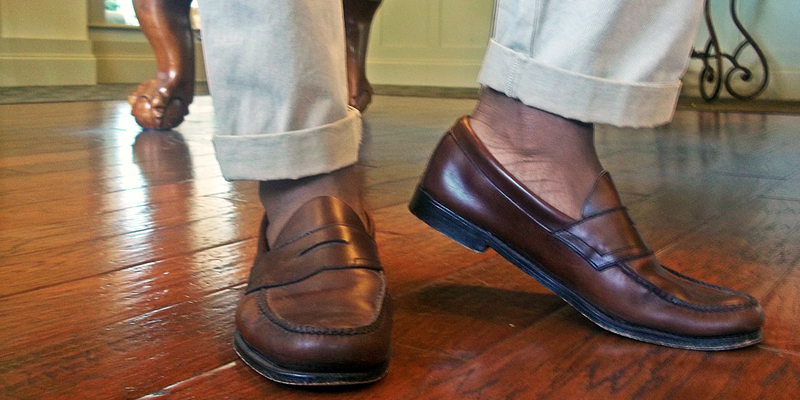
How many of you know that one of the most popular all-American style staples didn't originate in America? The penny loafer actually came from the other side of the Atlantic in Norway. The shoes were typically worn by dairy farmers while waiting in the cattle loafing area (where cows kick it before getting milked). Back in the 1930s, a photographer from Esquire magazine was in Norway and couldn't help but notice that these slip-ons were worn by almost everyone there.
When he got pictures of the shoes Stateside, there was an immediate interest in them. The Spaulding family, which owned a leather company, began producing their own version of the shoe, using said photographs as a guide. But it wasn't until the next year, 1934, when G.H. Bass and company (established in 1876) began making them, that Americans really took hold of the style. Bass coined the name "Weejuns," a play off the term "Norwegians." Another bit of loafer trivia? Rumor has it that Mrs. Bass used to kiss each shoe before her husband walked out the door, thus inspiring the lip-shaped design across the middle.
|
Loafers~Bass, Chinos~J.Crew |
Around the 1950s, the cool, preppy kids were looking for a way to set themselves apart from everyone else, so they started putting a penny in the slit, which is where the term "penny loafers" came from. However it wasn't long before they found a functional use for it: instead of a penny, they would put dimes in the slit. Back in those days, if you got in a jam and needed to use a pay phone (remember those?), you could take the dime out your shoe and make your call.
As the years went on, different cultures began to pick up on the loafer trend. In the late 1960s, the Italian brand Gucci created the now iconic Gucci Horsebit Loafer. A couple of other famous endorsers? The preppy president and the king of pop.
These days they're even more popular as they're worn by all different kinds of people, not just preps. And they can be worn many different ways—they can be dressed up or down. They're extremely versatile, which is a key component to casual style.